The Lotus Emira Is One of the Greats
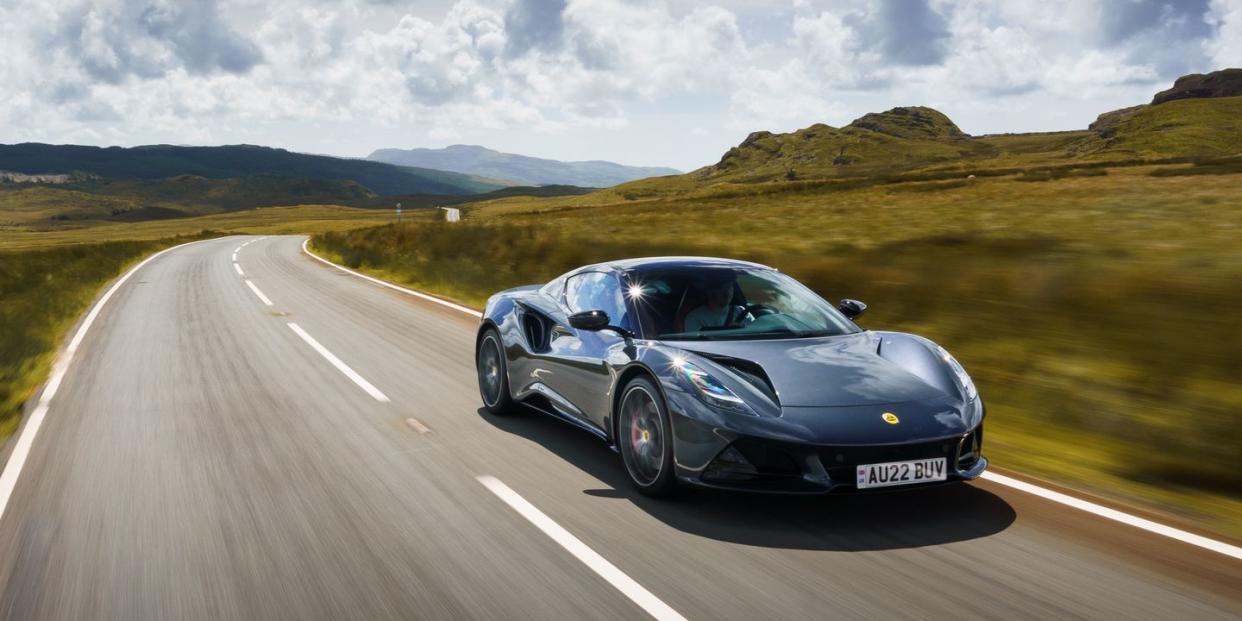
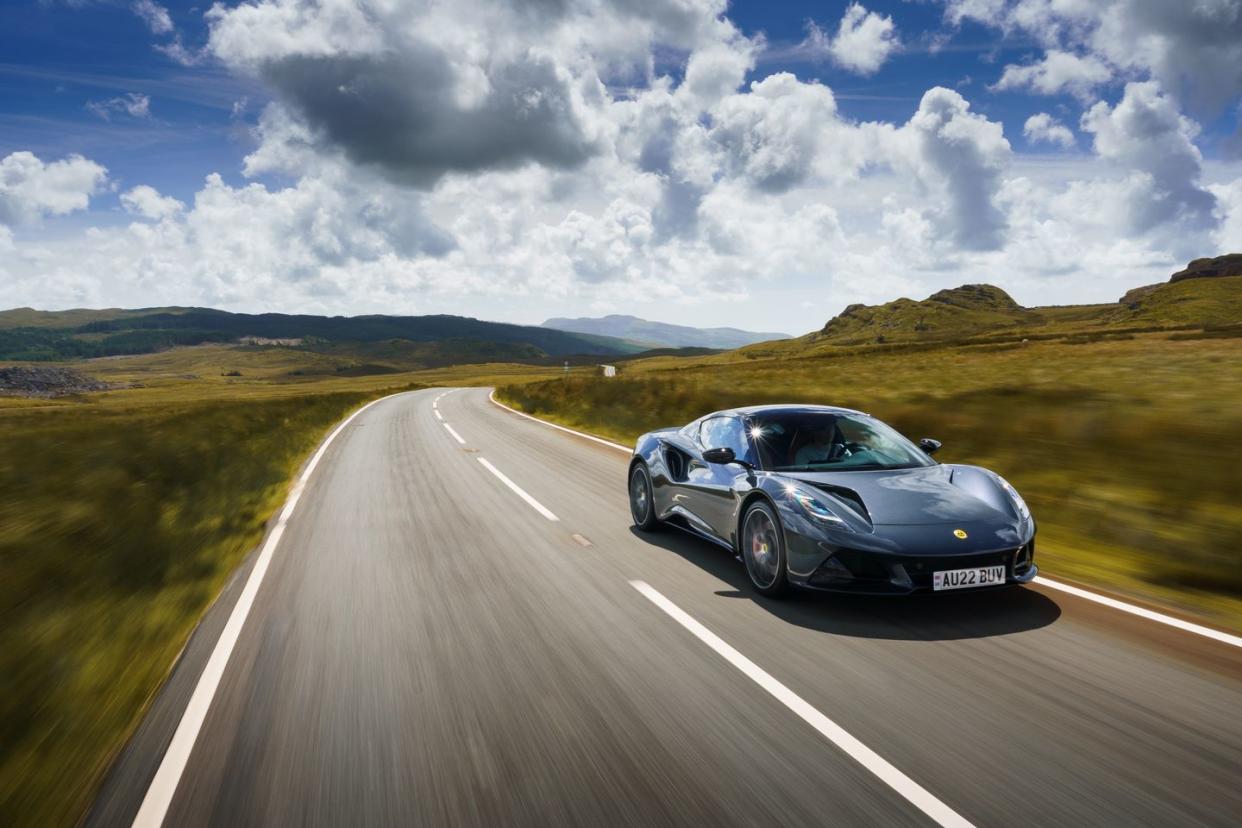
Lotus has been around since 1948, narrowly averting financial disaster over the last 75 years thanks to a series of corporate owners and a small, rabid fanbase. Yet the automaker from the tiny English hamlet of Hethel has had an outsize influence on the automotive industry, with revolutionary cars and a consultancy that has helped engineer some of the greatest handling vehicles ever. A few years ago, Chinese conglomerate Geely–the owner of Volvo, Polestar, the London Electric Vehicle Company, and a big chunk of Mercedes, among others–took notice and bought a majority share. Lotus finally didn’t need to worry about money.
The first new model to come after that acquisition is this, the Emira. It’s also the first to come from Lotus’s brand new factory, with tighter tolerances, increased automation, and a brand new paint shop that aims to move the build quality in line with cars from Germany, instead of cars from a barn. The Emira will be the final gas-powered production car to emerge before Lotus transitions to an all-electric full-line automaker, a big shift for the company that must suck up a massive amount of Geely’s investment. That doesn’t mean Lotus phoned it in on the Emira. The new coupe replaces an entire, aging lineup of sports cars, so it needs to appeal to the nutjobs who opted for an Exige, the crazies who bought an Evora, as well as people considering Porsches, BMWs, Corvettes, and more. Of course, Lotus was always attempting to conquest other automakers, but with sales of just 1710 cars globally in 2021, they clearly didn’t. And Geely won’t be happy with its investment if Lotus is selling fewer than 2000 cars per year. With the Emira, Lotus has done a pretty stellar job.
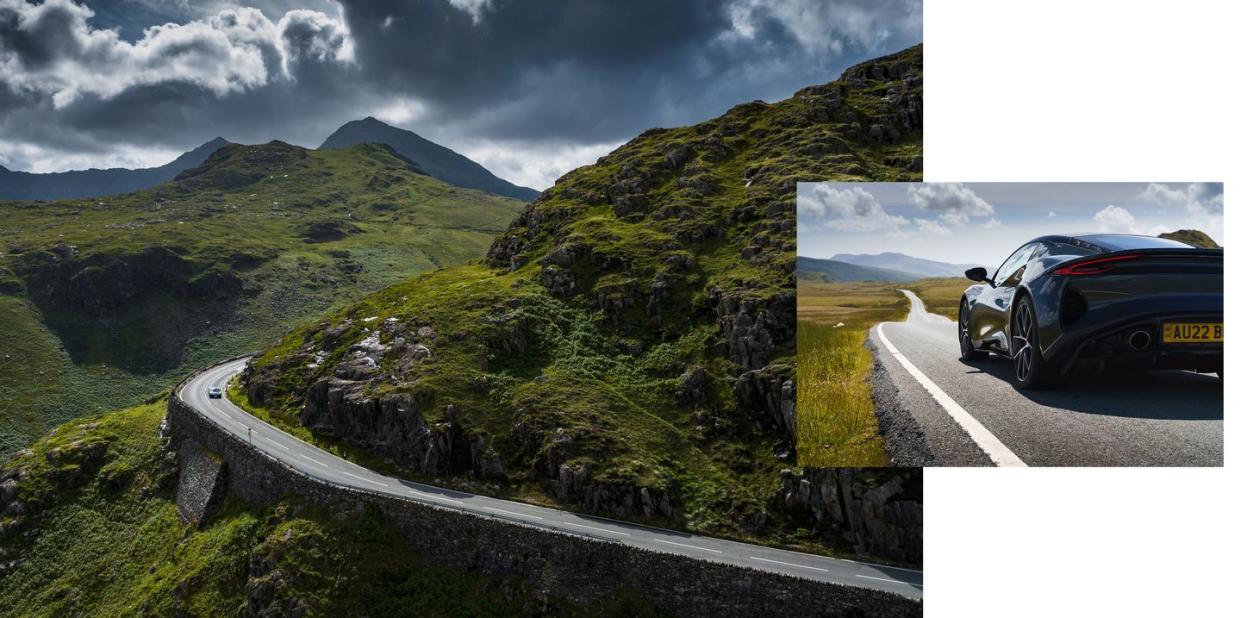
It’s gorgeous. There’s drama at every angle, from the boomerang vents on the hood to the massive side intakes. It has that normal Lotus stance, with a substantial gap between the top of the tire and the body, an indication that it has actual suspension travel. That’s contrasted by 20-inch forged wheels, the brand’s biggest. The interior is a quantum leap from the Evora, which felt cobbled together. The headunit is no longer an aftermarket Pioneer display, there’s a new in-house touchscreen floating on the dash. The instrument display is fully digital and easy to read. The gear linkage is exposed behind a neat little cage. The seats don’t appear to be something from a supplier catalog. It doesn’t stink of glue.
Like the Evora, the Emira still uses a 3.5 liter supercharged V-6 sourced from Toyota, linked to a six-speed manual or six-speed automatic, both made by Aisin. In the Emira, it makes 400 hp and 310 lb-ft. It’s more exciting than it would be in a Camry, but the engine runs out of steam just before its 7000 rpm redline. The gearbox is just okay, the action can be clunky and heavy. The Porsche Cayman’s six-speed manual is far more satisfying to operate. In 2023, Lotus will add a four-cylinder Emira powered by Mercedes-AMG’s M139 four-cylinder with 360 hp and 310 lb-ft. That car will have a dual-clutch gearbox only.
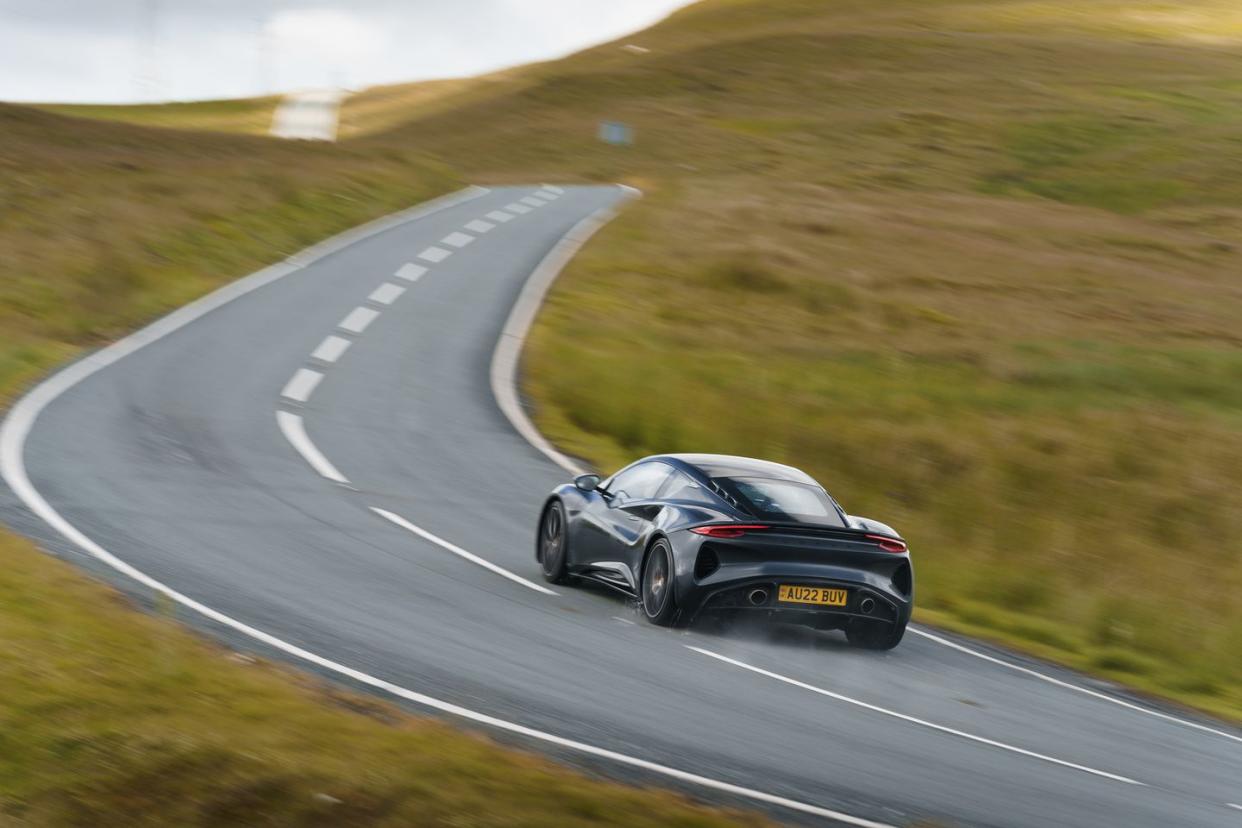
Lotuses tend to make their name in three categories: steering, handling, and ride quality. The hydraulic steering is simply phenomenal, delicate and properly weighted. It gives a clear indication of what the front tires are doing and the quality of the road surface. When a boor goes into a detailed dissection of good steering, they’re describing the Emira. That’s connected to a responsive and pointy front end. Turn in is immediate and everything about the way it handles is just sublime. It immediately takes a set, encouraging you to get back to power earlier and earlier. The combination of perfectly judged controls and a beautifully balanced chassis makes the Emira feel more natural and communicative than supposed “driver’s cars” that cost twice as much. The Emira is better through a corner than anything in its class, and nearly anything on the road.
Two out of three. There are two suspension setups, both on fixed dampers, so changing the drive mode won’t change ride quality. Sport is the harder of the two, intended for the owner who will track the car, while touring has lower spring and damper rates and is designed for cars that will be road driven almost exclusively. The pre-production car Lotus provided had the sport suspension. On English motorways and backroads in Wales, it proved too harsh. Roadway joints were jarring, and it didn’t have that flowing compliance on a backroad that’s been a Lotus trademark for decades. While the sport suspension is likely fine if you live where the roads are smooth as glass, the touring setup is the better option for buyers who know their local roads have at least one bump.
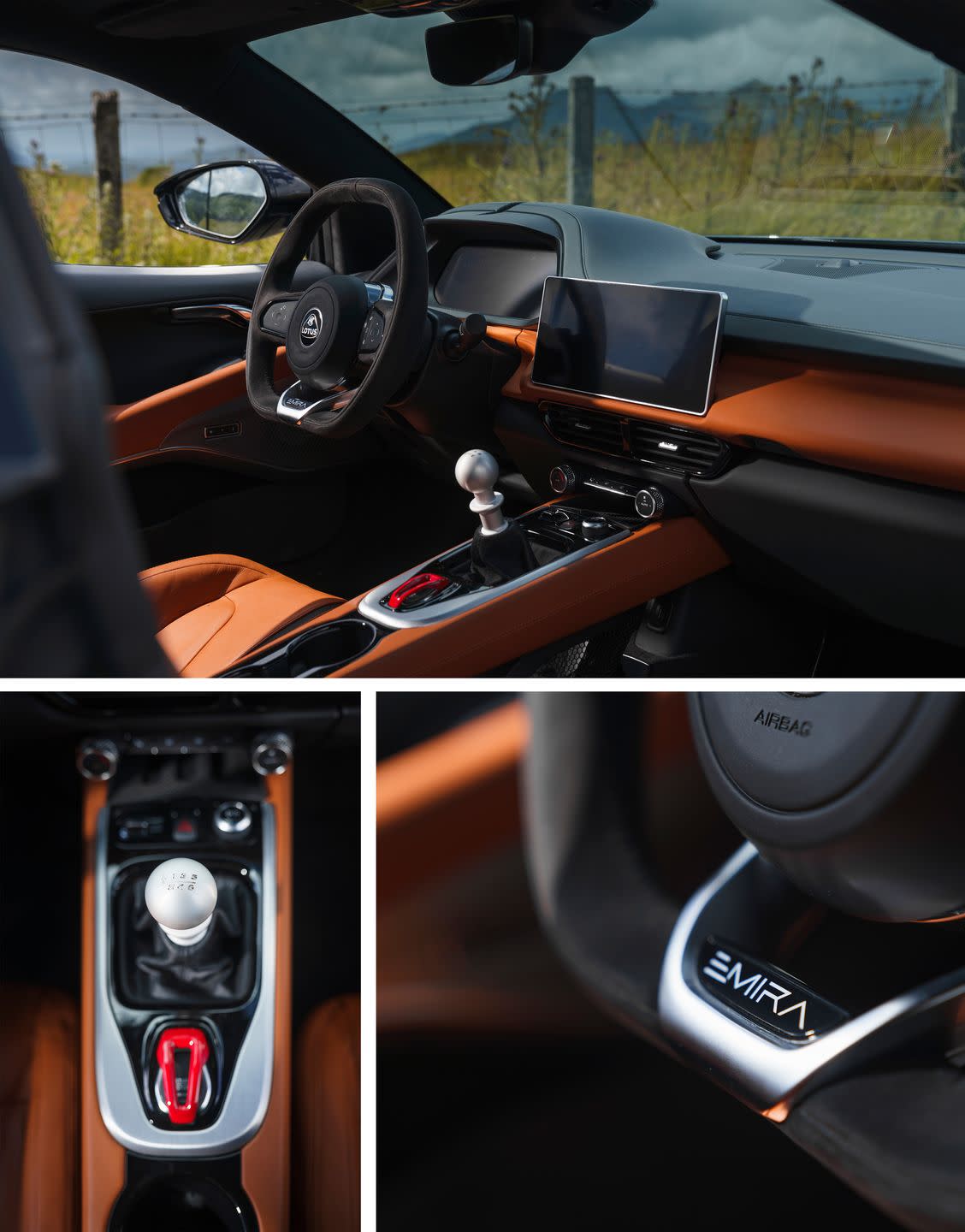
The suspension choice also impacts tires. Sport gets an option of Goodyear Eagle F1 Supersports or Michelin Pilot Sport Cup 2s, while touring can only opt for the Goodyears. Both tires were created specifically for the Emira. This car was fitted with Goodyears when I picked it up for a road trip and swapped to Cup 2s for track work. The Cup 2 is the better tire, without a doubt. It provides more grip, more feel from the front end, generally inspires more confidence. But that comes with a caveat: the Cup 2 is barely usable in anything but direct sunshine. If you live somewhere with weather, choose the Goodyear.
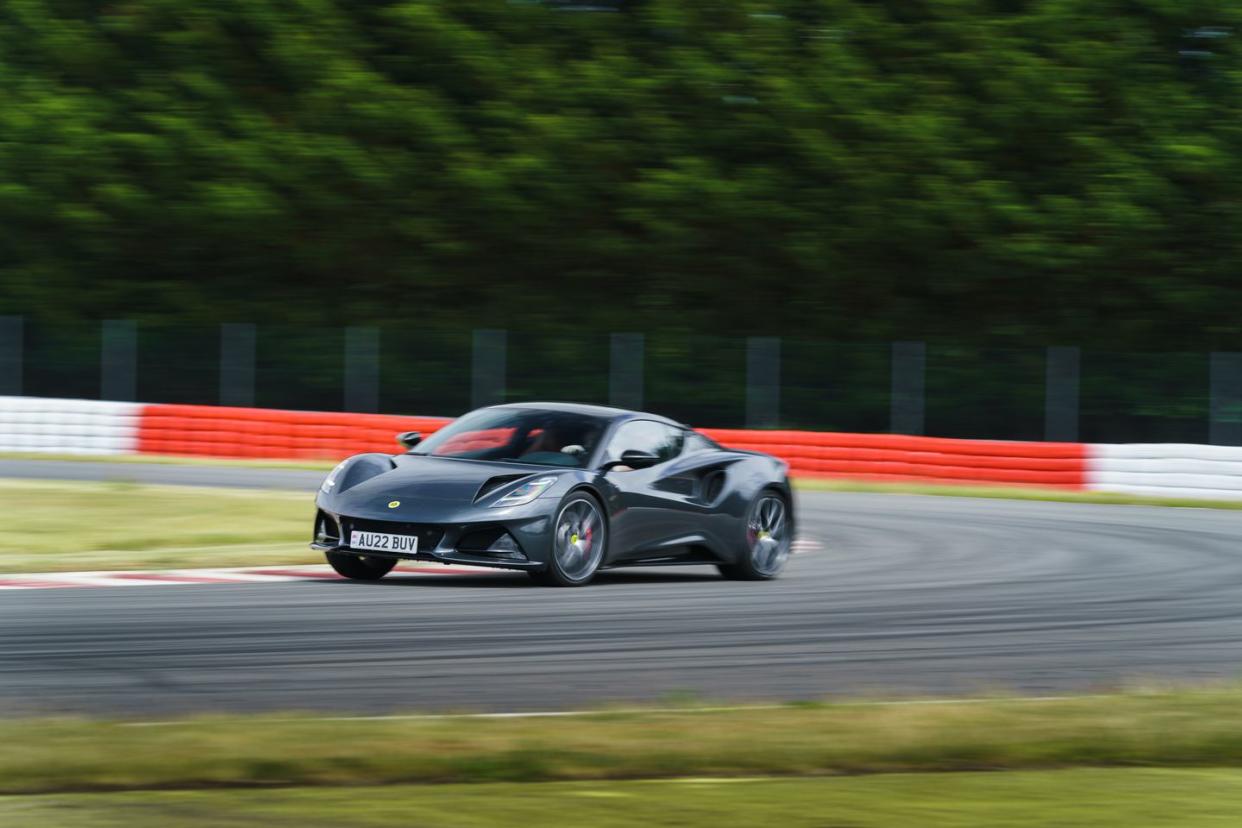
On track, the sport suspension acquits itself. The harsh ride smooths out at high speed, the higher spring and damper rates given a chance to shine. Brakes are strong with fantastic initial bite and are easy to modulate. The Emira could lap all day without issue, requiring only periodic stops for fuel. The gearbox is still finicky, preferring slower, deliberate movements between gears, but the pedals are perfectly placed for heel-toe downshifts. Only the most ham-footed of drivers would long for an auto rev-match system. The Emira is adjustable and responsive, an initial push returned to neutral by a breath off the throttle. The three drive modes, Tour, Sport, and Track, can’t change the suspension, so they change the exhaust note and throttle response, along with ESC interaction. The Emira uses Bosch’s latest system for traction control that intervenes both with brake and spark. It’s magic and nearly imperceptible when or if it’s working. I just wish there was less grip. The Cup 2 is such a sticky tire that the Emira’s relatively small amount of horsepower means it’s not the most lively thing mid corner, and others who have driven the Goodyears on track say it has a propensity for understeer. A minor quibble. It feels like joy.
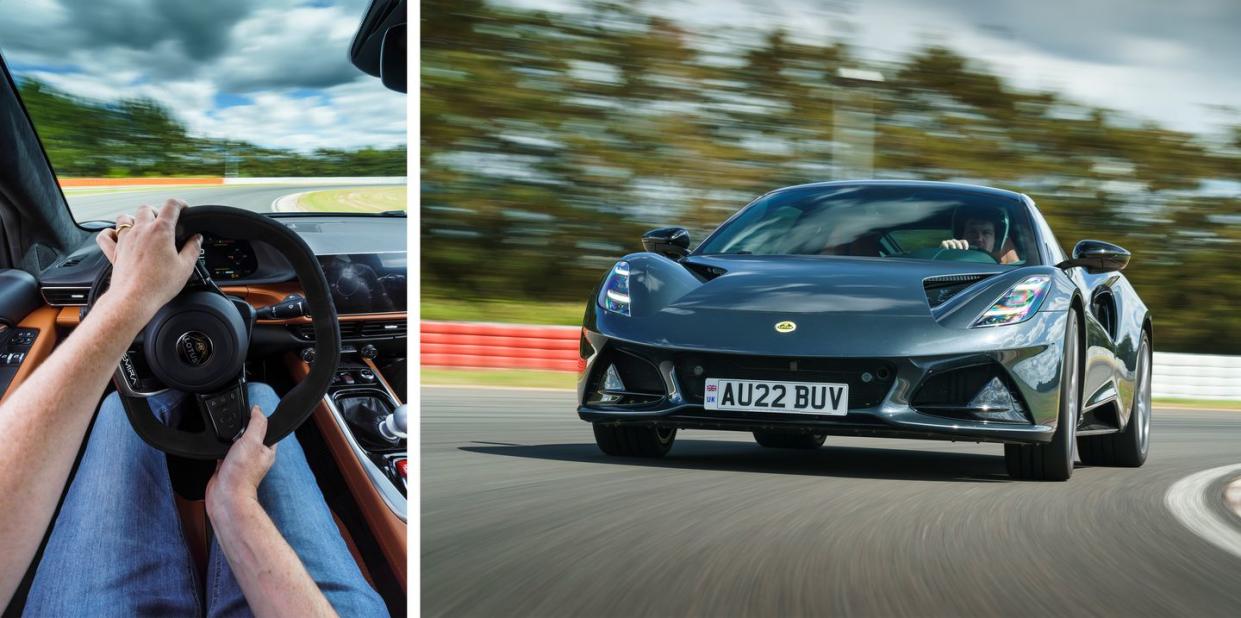
Still, it wouldn’t be a Lotus if there weren’t some questionable decisions. The Emira weighs more than the Cayman GTS 4.0, a disappointment coming from a company founded by Colin “Simplify and Add Lightness” Chapman. The steering wheel is too fat and square, with haptic buttons that will change the display if your palm brushes them, which your palm will. The trunk is too small for a rolling carry-on suitcase and there is no frunk. The drivetrain–down to the gear ratios–and the wheelbase, are identical to the outgoing Evora. There have also been delays, with customers reporting pushed back delivery dates.
You used to have to explain a Lotus; why you paid so much for a car with panel gaps big enough to stick a hand through. Why your sports car had a Camry’s engine. Why you didn’t just buy a Porsche. Those annoyances were the cover charge and in return you got an unparalleled driving experience. Now there’s a well-built, gorgeous, and brilliant to drive car carrying that same badge. And at $93,090 for a First Edition, it costs less than its predecessor and is the best driving car in its class. Sometimes going mainstream is all right.

You Might Also Like
